
The Orange River Colony was the British colony created after Britain first occupied (1900) and then annexed (1902) the independent Orange Free State in the Second Boer War. The colony ceased to exist in 1910, when it was absorbed into the Union of South Africa as the Orange Free State Province.

Sterling is the currency of the United Kingdom and nine of its associated territories. The pound is the main unit of sterling, and the word pound is also used to refer to the British currency generally, often qualified in international contexts as the British pound or the pound sterling.

The pound sterling is the official currency of the United Kingdom, Jersey, Guernsey, the Isle of Man, British Antarctic Territory, South Georgia and the South Sandwich Islands, and Tristan da Cunha.

The cedi is the unit of currency of Ghana. It is the fourth historical and only current legal tender in the Republic of Ghana. One Cedi is divided into one hundred Pesewas (Gp).
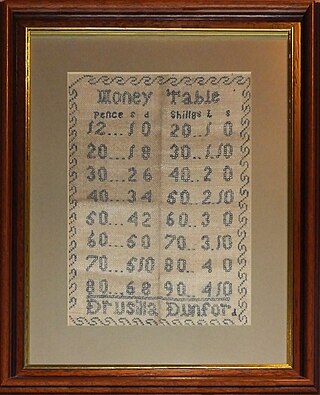
£sd, spoken as "pounds, shillings and pence", is the popular name for the pre-decimal currencies once common throughout Europe. The abbreviation originates from the Latin currency denominations librae, solidi, and denarii. In the United Kingdom, these were referred to as pounds, shillings, and pence.

The lira or pound was the currency of Malta from 1972 until 31 December 2007. One lira was divided into 100 cents, each of 10 mils. After 1986 the lira was abbreviated as Lm, although the original £M sign continued to be used unofficially. In English the currency was still frequently called the pound even after its official English language name was changed to lira.

The ten pence (10p) coin was a subdivision of the Irish pound. It was used in the Republic of Ireland from 1969 to 2002, with its last minting issue in 2000. It replaced the florin coin, of which it shared its design. Two different designs of the coin exist, both featuring a salmon on the reverse. The second was introduced in 1993 and is smaller, due to the reduction of the coin's value by inflation.

The fifty pence (50p) coin was a subdivision of the Irish pound. It was introduced in Ireland on 17 February 1970. It replaced the ten-shilling coin and ten-shilling note when decimalised, and due to this conversion was introduced a year before Decimal Day in 1971.
The tālā is the currency of Samoa. It is divided into 100 sene. The terms tālā and sene are the equivalents of the English words dollar and cent in the Samoan language. Its symbol is $, or WS$ to distinguish it from other currencies named dollar.

The Province of the Orange Free State, commonly referred to as the Orange Free State, Free State or by its abbreviation OFS, was one of the four provinces of South Africa from 1910 to 1994. After 27 April 1994 it was dissolved following the first non-racial election in South Africa. It is now called the Free State Province.
The pound was the currency of the Australian Territory of New Guinea between 1915 and 1966, and replaced the New Guinean mark when Australia occupied the former German colony at the end of World War I. The New Guinean pound was subdivided into 20 shillings, each of 12 pence, and was equal to the Australian pound.
The pound was the paper currency of South West Africa between the 1930s and 1959 by the Standard Bank of South Africa Limited, Barclays Bank, and Volkskas Limited. These notes circulated along with the South African pound notes of the South African Reserve Bank until 1961, when they were withdrawn and replaced with rand notes only. The South West African pound was pegged at par with the South African pound, which had replaced the South West African mark in 1918.

The South African Railways Class 16E 4-6-2 of 1935 is a class of passenger steam locomotive.
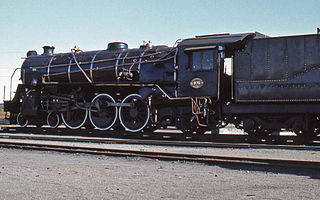
The South African Railways Class 16DA 4-6-2 of 1928 was a steam locomotive.

The South African Railways Class 3B 4-8-2 of 1912 was a steam locomotive.
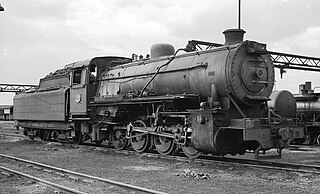
The South African Railways Class S 0-8-0 of 1929 was a steam locomotive.

South Africa issued revenue stamps from 1910 to 2009. Apart from national issues various provinces of the country issued revenues from around 1855 to c. 1970.
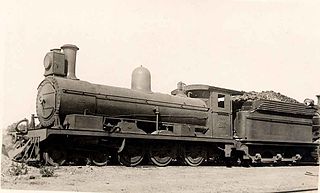
The Cape Government Railways 5th Class 4-6-0 of 1891 was a South African steam locomotive from the pre-Union era in the Cape of Good Hope.
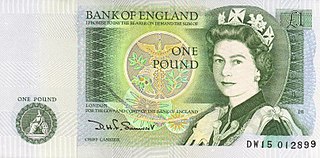
The Bank of England £1 note was a sterling banknote. After the ten shilling note was withdrawn in 1970, it became the smallest denomination note issued by the Bank of England. The one pound note was issued by the Bank of England for the first time in 1797 and continued to be printed until 1984. The note was withdrawn in 1988 due to inflation and was replaced by a coin.

The South African Railways Class 16DA 4-6-2 of 1930 is a class of steam locomotives.
This page is based on this
Wikipedia article Text is available under the
CC BY-SA 4.0 license; additional terms may apply.
Images, videos and audio are available under their respective licenses.
















